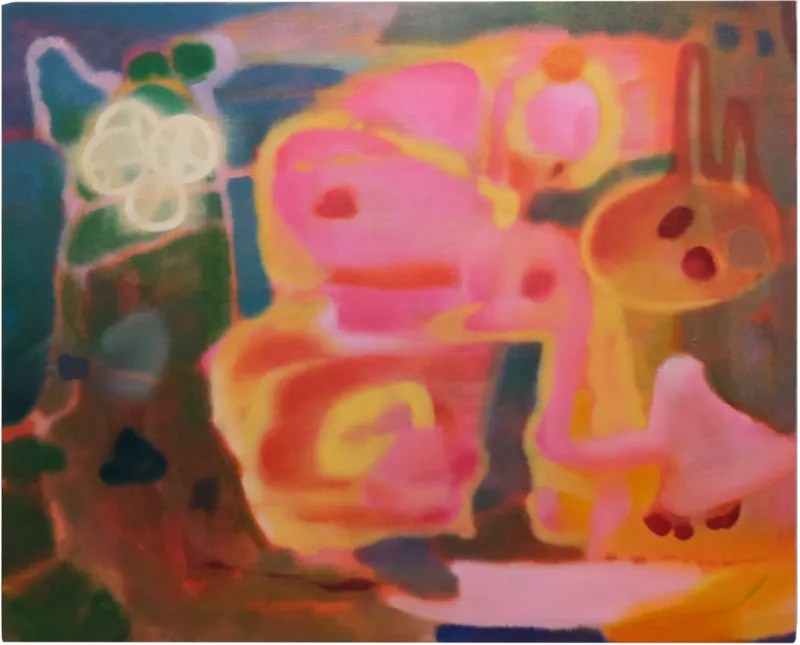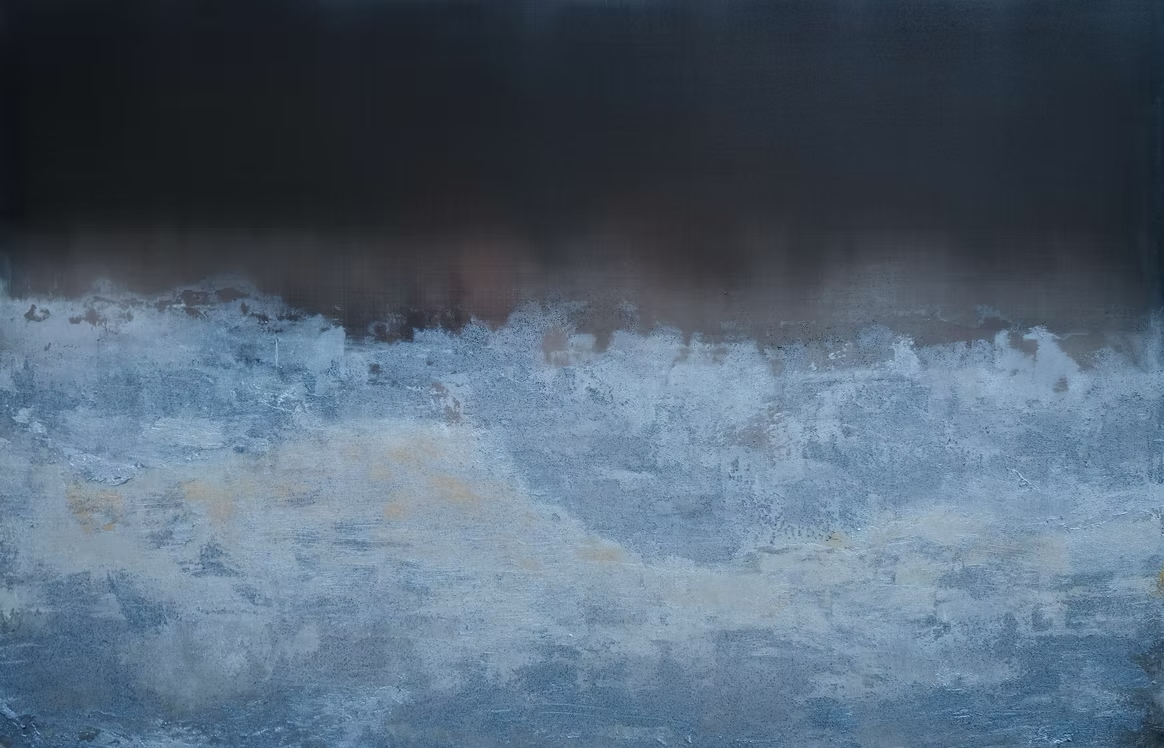Exhibition
Artifacts of Passage

Park Kyung Ryul, Saeng-Hwal, 2025, Oil on canvas, 65.1 x 80.3 cm. Courtesy of the Artist and Baik Art.
Some objects play important roles as a silent witness of events: cave paintings, inscriptions, fragments of Berlin wall, even something as personal as a miniature landmark keychain sold at souvenir shops. In Artifact of Passage, time is paused, moments are recorded in the form of paint strokes seeping on fabric, shallow chiseled cuts on wood, and sculpted objects mirroring the reality, whispering the artist’s message to its viewers.
In 2014, Fitriani DK did a residency at Ngadisono village, where she documented a social movement to secure the land that could be cultivated by the community. She visualized a scenery with the plants cultivated there and several figures to represent the community, including the mothers who fought from home. Fitriani does not only present the final result of her art practice, but also the woodcut. Offering the negative format of printmaking, the viewers can trace the artist’s process, where each cut, each paint applied, engraved the community’s spirit.
Today, brown paper bags are often associated with consumerism. Though sustainable, they are often discarded once losing their purpose. As a former F&B worker, Shin Min associates those paper bags as cheap disposable labor. She uses them as a medium to create a series of work illustrating female service workers. Black ribbon hairnets can often be seen in her works, as Shin said, to “symbolize the capitalist reality that many Korean women physically experience.”

Lee Jinju, Visible 25, 2024, Handmade lee jeongbae black, powdered pigment, animal skin glue and water on unbleached cotton, 108.7 x 81 cm. Courtesy of the Artist and Baik Art.
Being a woman is often associated with being a mother. As one herself, Le Thuy grieves on the current global events. She ruminates what would her Mother, the deities of her belief, do to remind, to punish, as well as to become a refuge of her suffering children? Pairing the lustrous characteristic of traditional Vietnamese black silk, lãnh Mỹ A, with an interplay of light and shadow, Le invites the viewers to a self-introspective journey, into the depth of belief.
Similar to Le, Jinju Lee uses traditional East Asian pigments for realistic figures in her painting, a remembrance of the Joseon dynasty portraits, showing tremendous details to its vein. Interested in the idea of body, perception, and subjective interpretation, Lee’s recent works begin with the question “What does it mean to be able to see?”, presenting semi-visible figures engulfed in the artist’s iconic matte-black background. As the hands covering the face that refuses to be seen, the viewer is invited to imagine the concealed.
Seeing could also be a manifestation of one’s memory and desire. Predominated by blues, greens, and blacks, Hyunsun Jeon’s paintings are made through a combination of geometric shapes and early video games aesthetics, inhabiting whimsical landscapes that embody both tranquility and tension. Jeon’s paintings offer alternative ways of seeing and shifts in perspective, transforming them into artifacts of perception, bridging the blurred boundaries between memory, dream, and reality.

Lê Thuý, The waste land 3, 2020, Acrylic and calligraphy ink on silk, 65 x 100 cm. Courtesy of the Artist and Baik Art.
In the past, sundials were invented to tell the time of the day based on the sun’s movement, slowly decreasing its brightness. The existence of light influences our decision, including Park Kyungryul’s during her art-making activity. It affects the chain of environment, motion, and time, that keeps on going even when the artist has put down her brush and wrapped up. Although the title marks the completion of the paintings, once they are exhibited in a new space, meeting foreign gazes, the time ticks again.
Following Nonalog exhibition in 2024, Artifacts of Passage is a continuation of Baik Art’s commitment in presenting depth and diversity of women’s voices in contemporary art.
2025. 09. 26. (Fri) – 2025. 11. 08. (Sat)
Baik Art (Jakarta)